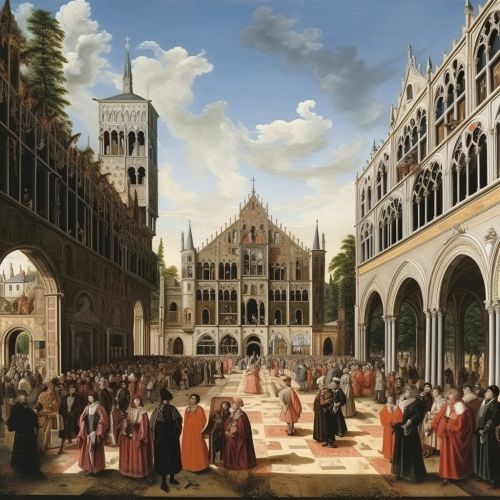History of universities
Origins of Universities
The concept of a university as an institution for higher learning and research, granting academic degrees, has its roots in the Middle Ages. The first universities were established in Europe, with the University of Bologna in Italy and the University of Paris in France being among the earliest and most influential. These institutions were born out of a need for trained professionals to serve the church and state, and they provided a structured environment for scholarly pursuits.


Development of Universities in Europe
The development of universities in Europe was closely tied to the rise of the Christian church and the expansion of the Roman Empire. The church was a major patron of learning and provided the institutional framework for the establishment of universities. The Roman Empire, with its extensive administrative apparatus, created a demand for educated individuals who could serve as administrators, lawyers, and doctors.
Universities in the Middle Ages were typically organized into faculties, including the faculties of arts, law, medicine, and theology. The faculty of arts was the foundational faculty, providing a general education in the liberal arts, while the other faculties offered specialized training in their respective fields.
The Renaissance and the Reformation
The Renaissance and the Reformation had a profound impact on universities. During the Renaissance, there was a renewed interest in classical learning, which led to the establishment of new universities and the expansion of existing ones. The Reformation, on the other hand, led to the establishment of Protestant universities and the transformation of many existing universities.


Universities in the Modern Era
The modern university, as we know it today, emerged in the 19th and 20th centuries. This period saw the establishment of many new universities, particularly in the United States and Europe, and the expansion of existing ones. The modern university is characterized by its commitment to research, the professionalization of its faculty, and the expansion of its curriculum to include a wide range of disciplines.
The 20th century also saw the democratization of higher education, with universities becoming more accessible to individuals from all social classes. This was facilitated by the introduction of government funding for higher education and the establishment of open admission policies.
The Role of Universities in Society
Universities play a crucial role in society. They are centers of learning and research, contributing to the advancement of knowledge and the development of new technologies. They also play a key role in the economic development of regions and countries, through the creation of jobs and the generation of income.
Universities also serve a social function, providing opportunities for social mobility and contributing to the development of a well-educated citizenry. They are also important cultural institutions, preserving and promoting cultural heritage and fostering cultural exchange.


Challenges and Opportunities for Universities
Universities face a number of challenges in the 21st century. These include the increasing cost of higher education, the impact of technology on teaching and learning, and the need to adapt to a rapidly changing global environment.
At the same time, universities also have a number of opportunities. These include the potential to leverage technology to enhance teaching and learning, the opportunity to engage in interdisciplinary research to address complex global challenges, and the potential to play a leading role in promoting social justice and sustainability.
